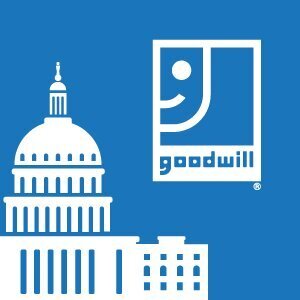By Mitch Coppes, Government Relations Senior Specialist, Goodwill Industries International
In a rare show of bipartisanship for a deeply divided Congress, lawmakers recently passed a second stopgap funding bill to avert the government shutdown that threatened to take effect after the midnight deadline on Friday, November 17. The continuing resolution (CR) temporarily extends funding for federal agencies and programs into 2024 using staggered deadlines. The bill requires lawmakers to reach a full-year spending deal on certain agencies, such as Agriculture, Veterans Affairs, Transportation, and Housing and Urban Development, by January 19. The remaining funding bills, including appropriations for Labor, Health and Human Services, and Education, will then need to be completed by February 2.
However, a full or partial shutdown may still occur if Congress is unable to reach agreements on all 12 appropriations bills by the deadlines established in the CR. The House leadership was forced to postpone a planned vote on its version of the fiscal year (FY) 2024 Labor, Health and Human Services, and Education appropriations bill because it lacked the votes needed to pass in the chamber. Unlike the CR, the House Labor-HHS-Education bill has drawn strong opposition from congressional Democrats and the White House, as well as some House Republicans. It proposes to reduce overall funding for the Department of Labor by more than $4 billion below the current level and would significantly cut or eliminate funding for essential employment and training programs. Rep. Rosa DeLauro (D-CT), ranking member of the House Appropriations Committee, argued against the proposed cuts to workforce programs in the bill. “Regardless of your age or stage in life, this bill means you cannot count on your country for assistance getting back on your feet,” said DeLauro. “Youth Job Training, Adult Job Training, Job Corps, Senior Community Service Employment Programs are all eliminated.”
By contrast, the Senate version of the FY24 Labor-HHS-Education bill proposes funding allocations that are closer to current levels for most federal workforce programs, and it would even provide targeted increases for apprenticeships, Pell Grants, childcare, and low-income heating assistance among other programs. Senators are expected to take up the bill as part of a larger spending package sometime after the Thanksgiving break. However, the significant differences between the House and Senate on funding levels will complicate efforts to reach agreements on full-year funding bills before the new 2024 deadlines. We will continue to advocate for a bipartisan funding agreement that provides robust investments in our nation’s workforce.

 Build A One-Of-A-Kind Halloween Fit With Our Costume Planner
Build A One-Of-A-Kind Halloween Fit With Our Costume Planner





